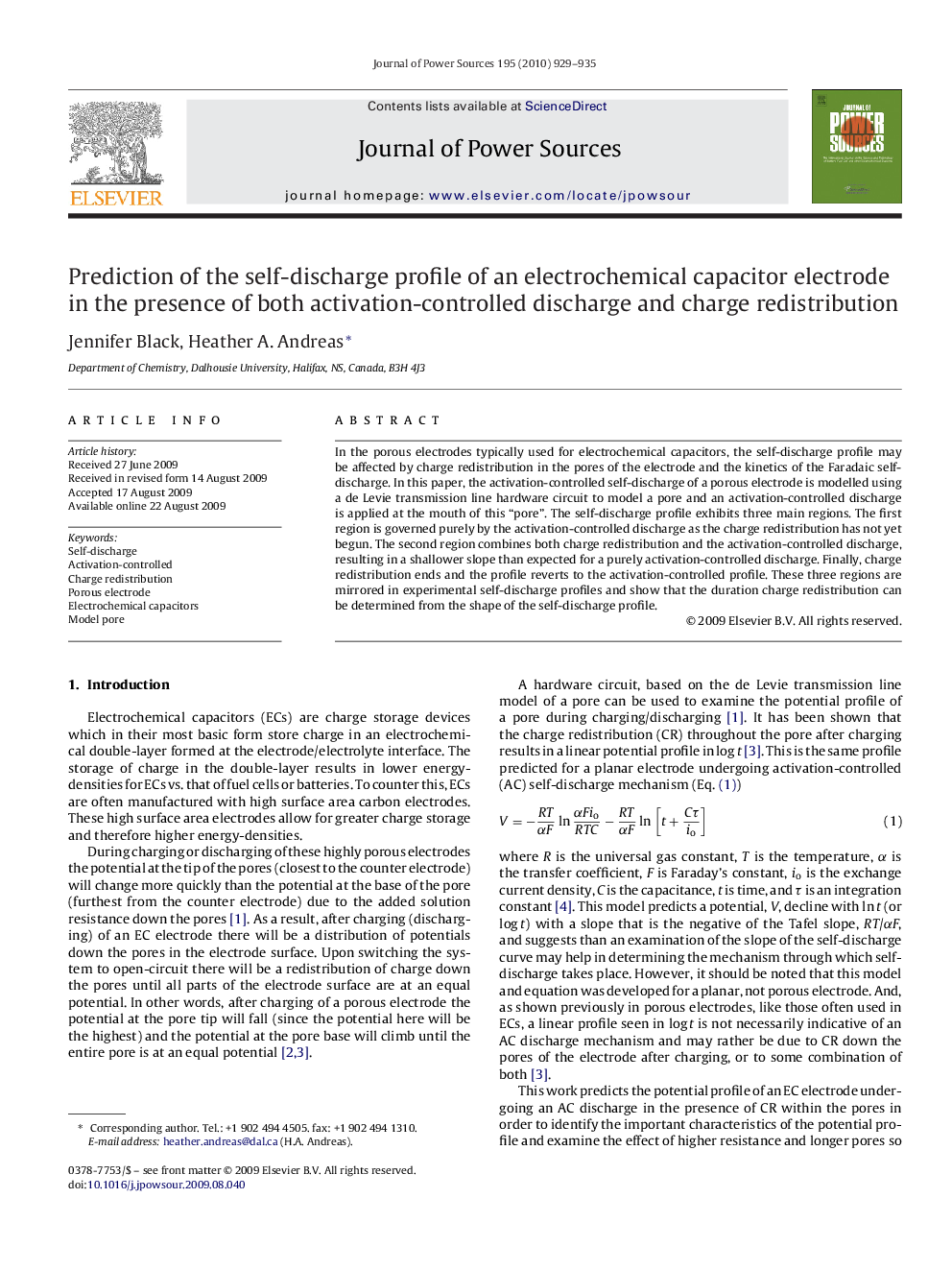| Article ID | Journal | Published Year | Pages | File Type |
|---|---|---|---|---|
| 1289334 | Journal of Power Sources | 2010 | 7 Pages |
In the porous electrodes typically used for electrochemical capacitors, the self-discharge profile may be affected by charge redistribution in the pores of the electrode and the kinetics of the Faradaic self-discharge. In this paper, the activation-controlled self-discharge of a porous electrode is modelled using a de Levie transmission line hardware circuit to model a pore and an activation-controlled discharge is applied at the mouth of this “pore”. The self-discharge profile exhibits three main regions. The first region is governed purely by the activation-controlled discharge as the charge redistribution has not yet begun. The second region combines both charge redistribution and the activation-controlled discharge, resulting in a shallower slope than expected for a purely activation-controlled discharge. Finally, charge redistribution ends and the profile reverts to the activation-controlled profile. These three regions are mirrored in experimental self-discharge profiles and show that the duration charge redistribution can be determined from the shape of the self-discharge profile.
